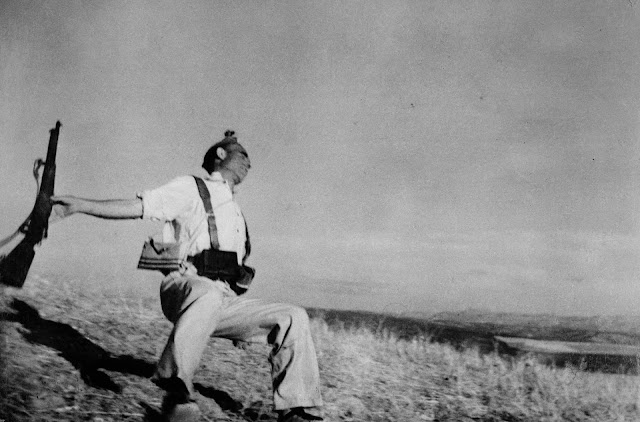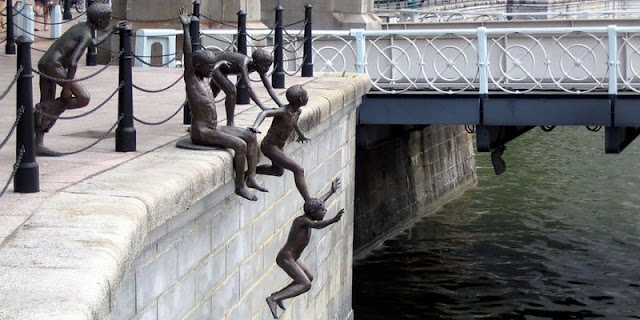EVELYN CHOW//FURTHER RESEARCH ON QUESTIONS
Reconsidering the topic and clarifying, this post will explore answers to the questions listed below. It will include some artists' works and sample footage.
1. What is the preparation? What is the start and what is the end? Any direction?
In Peter Wollen's Fire and Ice, 1984, he described this photograph as perfective:'it seen from the outside as a complete action, delimited in time with a beginning and an end.'
Frank Noel, Untitled, 1942
A sailor in a lifeboat adrift on the Indian Ocean pleads for water. These sailors (and the photographer) had been traveling on a freighter bound from Singapore to Burma when it was sunk by a Japanese torpedo. The start of the movement is when the camera captured this picture, and we can notice the end is when the boat is sunk by a Japanese torpedo.2. Are they the same? Duration=Measurement?
The answers maybe. It is clear that when there is a measurement of time, for example, I wrote this sentence in 10 seconds, then you might know the duration of time when I prepared to write and finished writing. Measurements can also be in hours, days, months, and years. However, duration or passage of time can also be shown in sensation. There is a piece of sculpture work that shows the duration, Chong Fah Cheong's First Generation in 2000. It shows a series of statues that a group of boys jumping into the Singapore River. (Mafi and Cherner, 2019) One boy is hanging in the air so that spectators can sense the movements that the artworks are moving toward and imagine the next second he will fall into the water. The boy sitting on the ground is the starting point and the end will be the boys in the water.
Image available from: https://www.architecturaldigest.com/gallery/11-most-fascinating-public-sculptures.3. Why it starts?
When it comes to a discussion of a start and an end, I associate the game 'Dominoes' and a term called 'Domino Effect'. It is known as a mechanical effect; it is a cumulative effect that a chain of similar events occurs because of a particular event and it is used as an analogy to a falling row of dominoes. (Merriam Webster, 2023) Dominoes show the process of a movement, which it might be called 'duration'. It starts because of a force; somebody pushes the first domino, then it lies to the second one, and it causes a chain effect. Finally, it ends when the last domino falls down. The movement is a repeated pattern that the weight of dominoes and the sizes are the same. They all lie in one direction. The duration here is determined by the number, size, and weight of dominoes. Also, the distance between two dominoes. Why it starts? The key is the particular point that triggers the whole movement.
Reference:
Harris, J. (2008). New Ideas in Art: Time as an Element. [online]. Available from: new-ideas-in-art-time-as-an-element. [Accessed 27 January 2023]
Mafi and Cherner. (2019). 38 of the Most Fascinating Public Sculptures. [online]. Available from: https://www.architecturaldigest.com/gallery/11-most-fascinating-public-sculptures. [Accessed 29 January 2023]
Merriam Webster. (2023). domino effect. [online]. Available from: https://www.merriam-webster.com/dictionary/domino%20effect. [Accessed 27 January 2023]
The Met. (n.d.). The Falling Soldier. [online]. Available from: Capa's Spain, 1936. [Accessed 18 January 2023]





